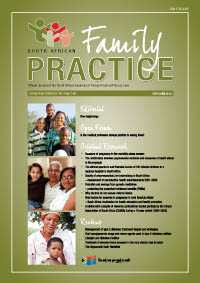Quality of Pharmaceutical Print Advertising in South Africa - Assessment of Reproductive Health Advertisements 2001-2005
Keywords:
pharmaceutical advertising, quality, Code of Practice
Abstract
Background: Pharmaceutical advertising, in a variety of forms, has been shown to influence prescribing behaviour. Regulatory systems have therefore been concerned with the quality of advertising and compliance with either imposed or self-regulatory codes of practice. Although the South African Medicines Act provides for an enforceable Code of Practice, the draft version published in 2004 has yet to be put into effect. This study aimed to assess the quality of pharmaceutical advertisements for reproductive health products, published in South African consumer and medical publications over the period 2001 to 2005. Compliance with the draft Code of Practice was considered, as well as the usefulness of the Code itself. Methods: Half-page and larger print advertisements for reproductive health medicines were sought from 2 of South African peer-reviewed and 4 non-peer-reviewed medical publications, as well as from 1 female-interest and 1 male-interest consumer publications. Advertisements published in 3 consecutive months in 2001 to 2005 were selected. This period represented the period prior to legislation being developed and the period during which the Code of Practice was developed and published for comment. Details from each advertisement were captured independently by two reviewers using a pre-determined, pre-tested 60-question questionnaire. Differences were resolved by consensus. The questionnaire was pre tested and adapted before being applied. Questions sought to identify characteristics of the advertisement that were indicative of quality relating to claims and evidence used in support of the claims, as well as adherence to the draft Code of Practice. The number of claims made in each advertisement was identified, and for each claim the evidence provided in the form of references was assessed. Results: A total of 136 reproductive health product advertisements were retrieved from 105 medical publications and 11 from 30 consumer publications. Only 63 advertisements from medical publications and 9 from consumer publications were unique. On average each medical publication selected contained 1.3 reproductive health product advertisements and each consumer publication contained 0.4 such advertisements. All but 5 advertisements were for registered orthodox medicines. A total of 191 ‘claims’ could be discerned in advertisements placed in medical publications (average 3.0 ‘claims’ per advertisement) and 20 in consumer publications (average 2.2 per advertisement). Only 7/103 (6.8%) references cited in unique advertisements in medical publications could be retrieved in abstract form from Medline, and only 1/7 (14.3%) of these references could be retrieved in free full-text format, compared with 1/9 (11.1%) and 0/1 (0%) in consumer publications respectively. In total, 14/103 (13.6%) of the references cited in advertisements placed in medical publications were listed as “Data on file. Compliance with the relevant General Regulation was easier to judge, and seen more often, than was the case in respect of the more subjective elements included in the draft Code of Practice. Conclusions: The quality of advertisements for reproductive health products placed in both medical and consumer publications appears to fall short of at least some of requirements of both existing and draft regulatory instruments. This may potentially have deleterious consequences for both prescriber and consumer behaviour. The draft Code of Practice is, however, often difficult to apply in an objective and consistent manner, and may be open to interpretation and thus variable standards of quality.
Published
2008-12-12
Section
Original Research
By submitting manuscripts to SAFP, authors of original articles are assigning copyright to the South African Academy of Family Physicians. Copyright of review articles are assigned to the Publisher, Medpharm Publications (Pty) Ltd, unless otherwise specified. Authors may use their own work after publication without written permission, provided they acknowledge the original source. Individuals and academic institutions may freely copy and distribute articles published in SAFP for educational and research purposes without obtaining permission.

